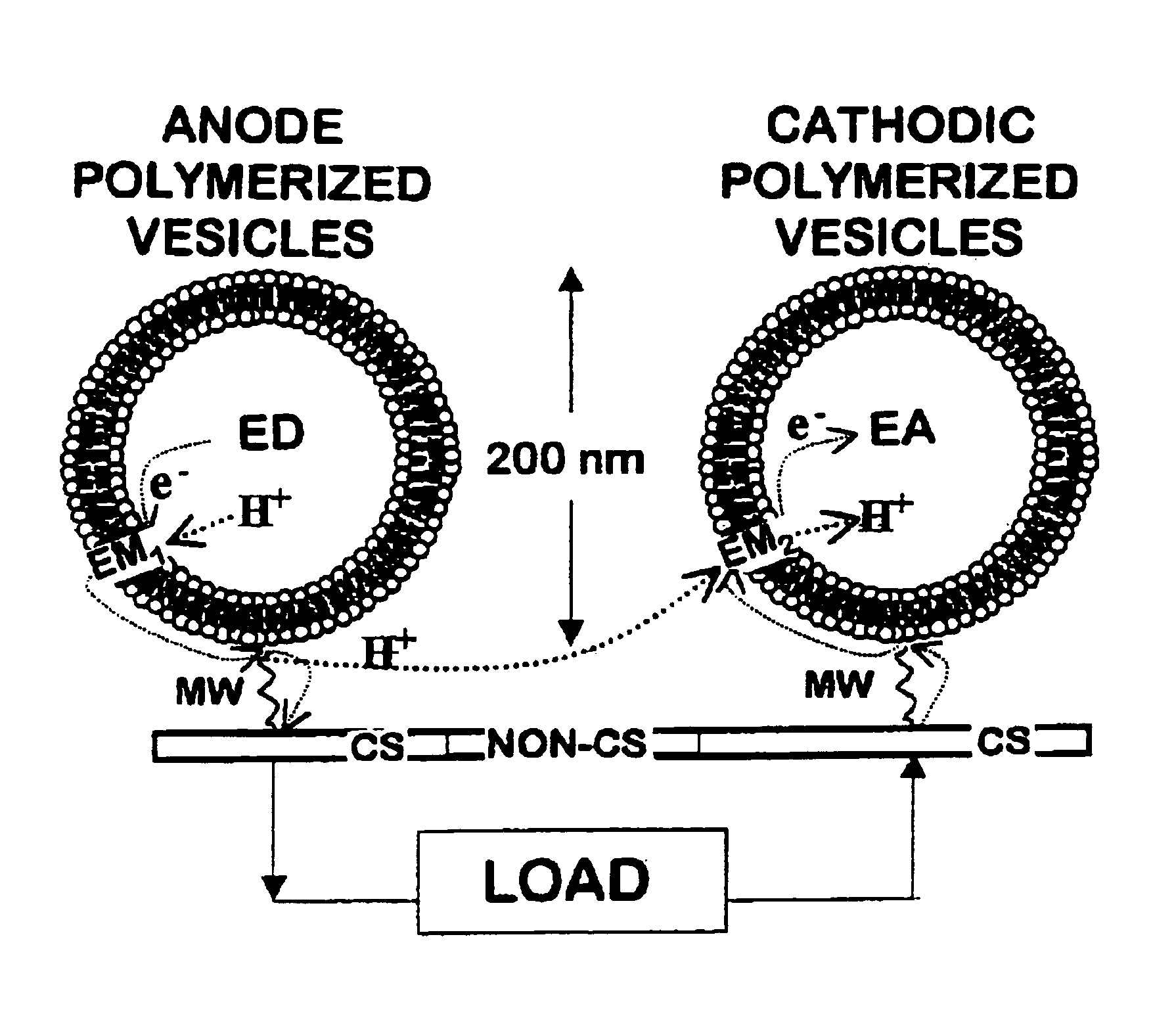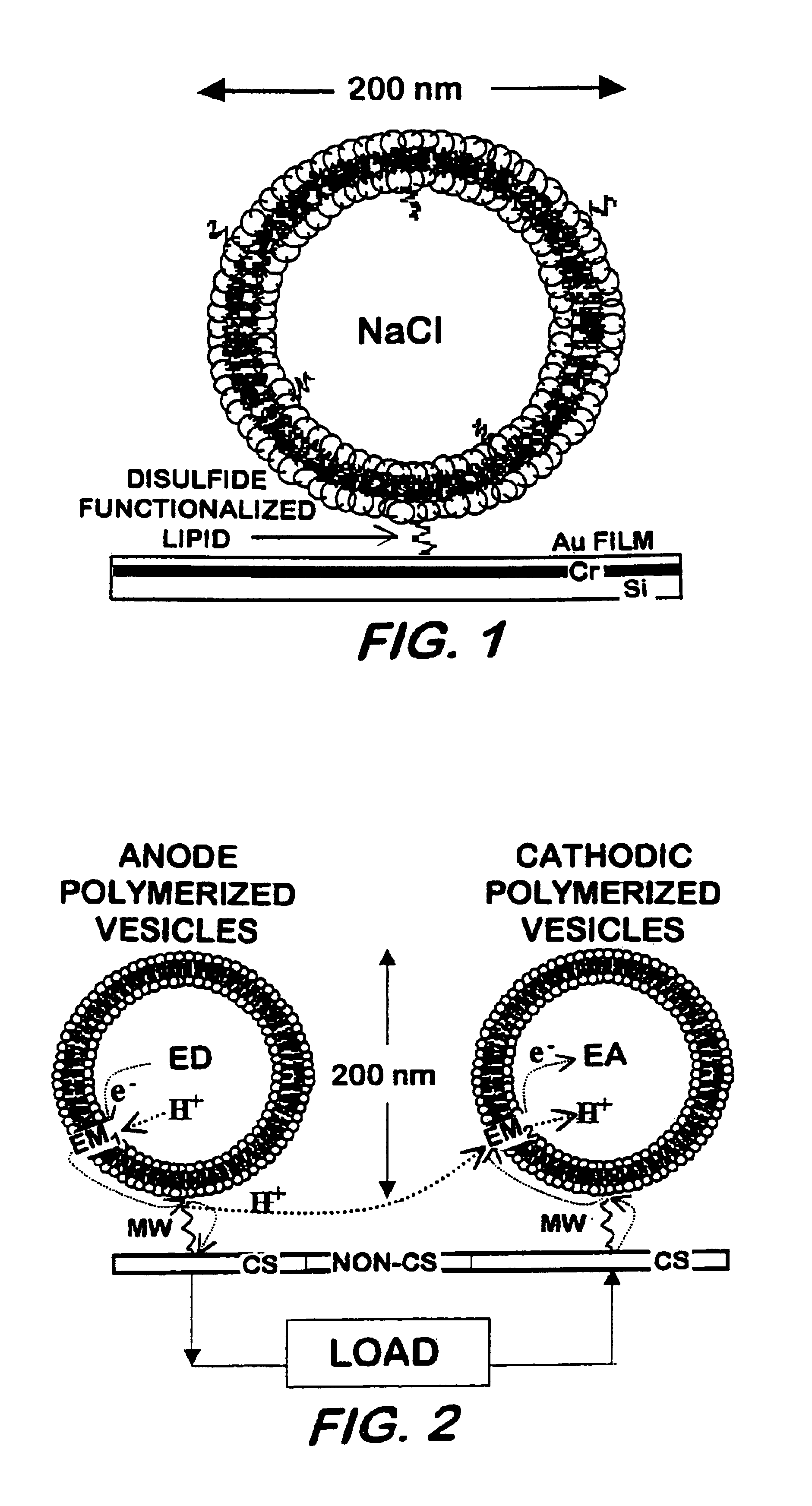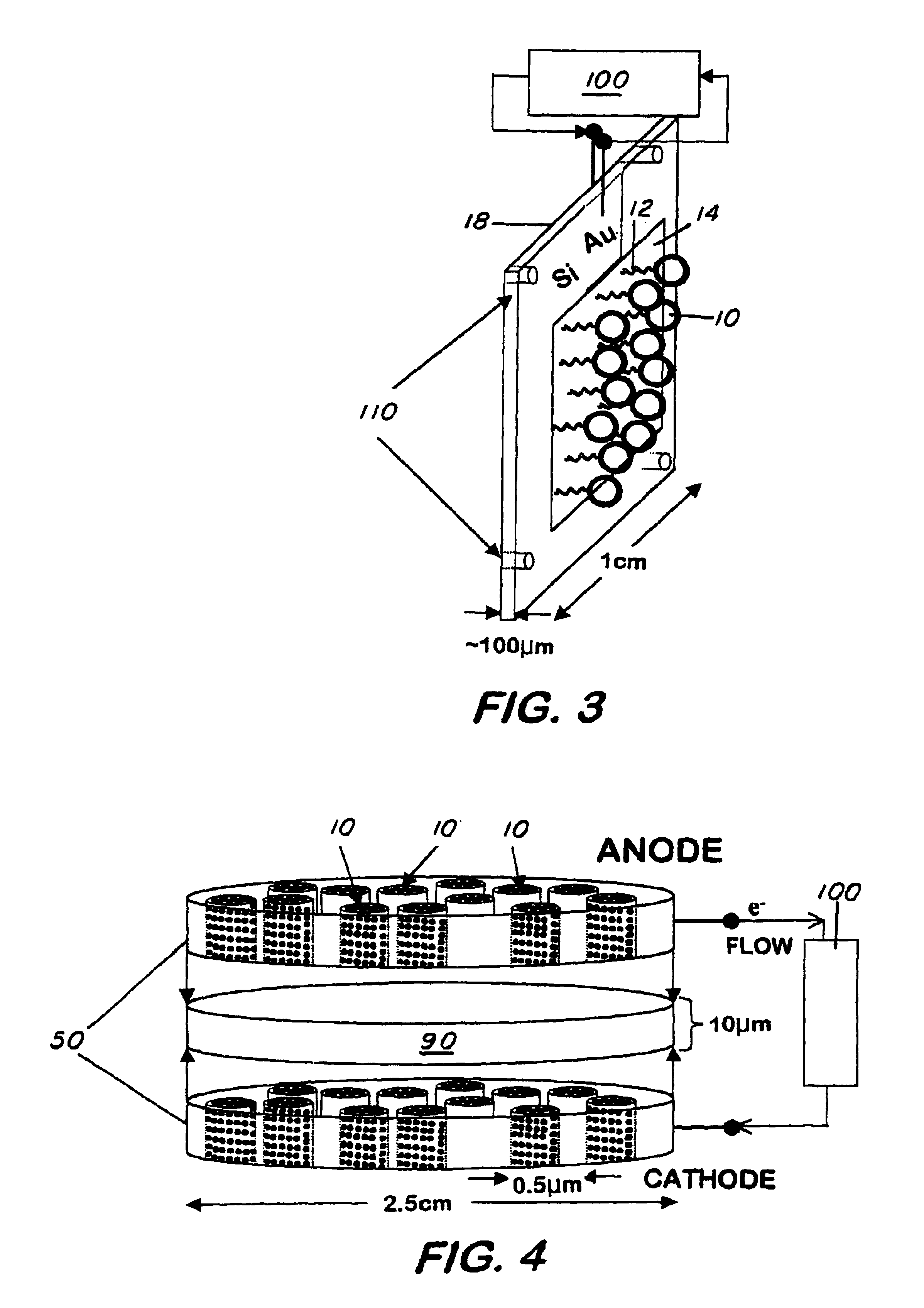Biobased microbattery
a micro-batteries and bio-based technology, applied in the field of micro-batteries and methods for making same, can solve the problems of low discharge rate, toxicity, flammability, explosion,
- Summary
- Abstract
- Description
- Claims
- Application Information
AI Technical Summary
Problems solved by technology
Method used
Image
Examples
example 1a
[0033]Vesicle formation—25 mg of DC8,9PC was placed in a scintillation vial and dispersed with 5 mL of deionized water. The sample was vortexed for 1 minute, heated to 50° C. for 2 hours, and subsequently extruded 10 times through 0.2 μm Nucleopore membranes using a Lipex extruder (Lipex Biomembranes Inc., Vancouver BC). The sample was UV-irradiated for 10 minutes at 8° C. using a Rayonett Photochemical reactor (So. New England Ultraviolet Co., Hamden, Conn.). Polymerized vesicle average size (˜200 nm), shape (spherical), and lamellarity (uni-) were determined by dynamic laser light scattering using a Coulter Model N4MD (Coulter Electronic, In., Miami, Fla.) and / or by a Zeiss transmission electron microscopy (TEM) or by an 8100 Hitachi high resolution TEM.
example 1b
[0034]Vesicle formation—25 mg of 1-palmitoyl-2-(tricosa-10,12-diynoyl)-sn-glycero-3-phosphocholine PC8,9PC was placed in a scintillation vial and dispersed with 5 mL of deionized water. The sample was vortexed for 1 minute, heated to 50° C. for 2 hours, and subsequently extruded 10 times through 0.2 μm Nucleopore membranes. The sample was UV-irradiated for 10 minutes at 8° C. Polymerized vesicle average size (˜200 nm), shape (spherical), and lamellarity (uni-) were determined by dynamic laser light scattering and / or by TEM.
example 1c
[0035]Vesicle formation—25 mg of DC10PC was placed in a scintillation vial and dispersed with 5 mL of deuterated water. The sample was vortexed for 1 minute, heated to 50° C. for 2 hours, and subsequently extruded 10 times through 0.2 μm Nucleopore membranes. The sample was exposed to 10 megaradians of γ-radiation using a 60Co source. Polymerized vesicle average size (˜130 nm), shape (spherical), and lamellarity (uni-) were determined by dynamic laser light scattering and / or by TEM.
PUM
| Property | Measurement | Unit |
|---|---|---|
| thickness | aaaaa | aaaaa |
| diameter | aaaaa | aaaaa |
| thickness | aaaaa | aaaaa |
Abstract
Description
Claims
Application Information
 Login to View More
Login to View More - R&D
- Intellectual Property
- Life Sciences
- Materials
- Tech Scout
- Unparalleled Data Quality
- Higher Quality Content
- 60% Fewer Hallucinations
Browse by: Latest US Patents, China's latest patents, Technical Efficacy Thesaurus, Application Domain, Technology Topic, Popular Technical Reports.
© 2025 PatSnap. All rights reserved.Legal|Privacy policy|Modern Slavery Act Transparency Statement|Sitemap|About US| Contact US: help@patsnap.com



